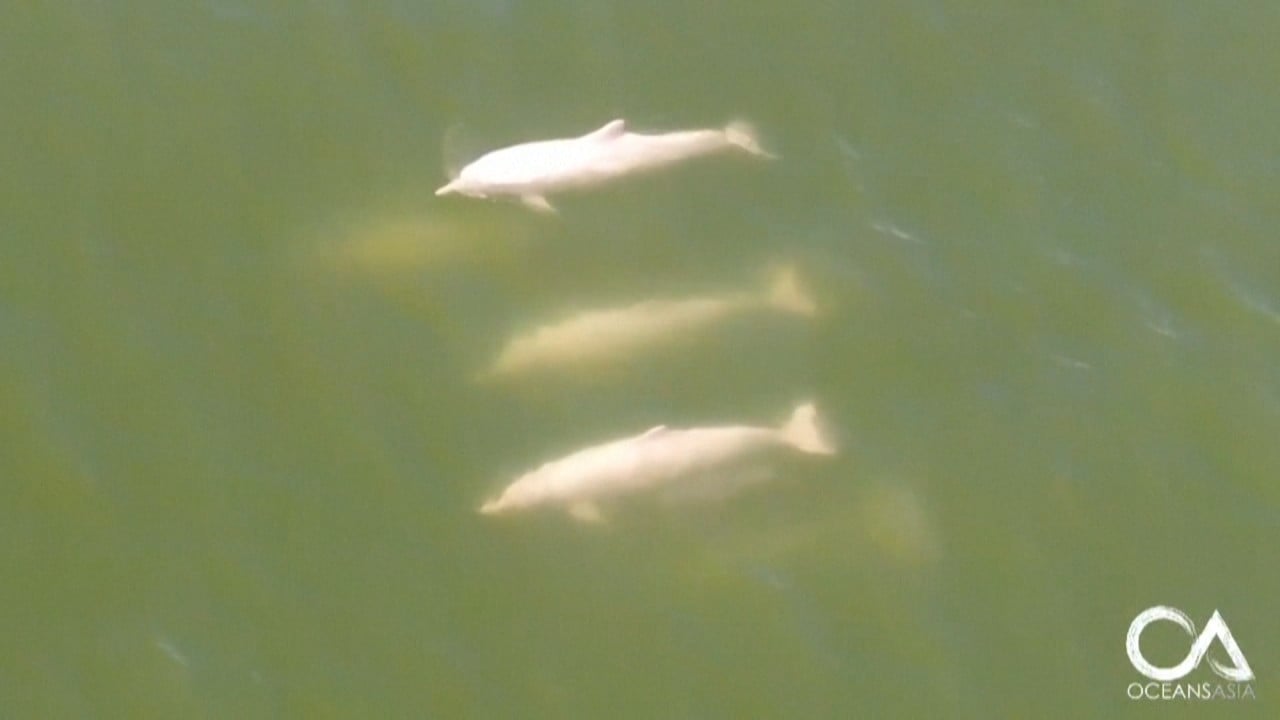Pink dolphins staying longer in Hong Kong waters, a sign of falling pollution levels during Covid-19
- Green groups warn pollution will return unless city does more to change harmful behaviours
- Volunteers who clean beaches find more Covid-19 trash, including used masks, plastic cutlery

Native to the Pearl River Estuary and listed as a vulnerable species, their population in the area has been decreasing from about 2,500 in 2013 to about 2,000 last year, according to the conservation organisation WWF-Hong Kong.
Recent data collected by the organisation has shown that the sea mammals are spending more time in one of their major habitats, off Lantau Island. The improvement coincided with the suspension of cross-border ferries since February because of the pandemic.
Acoustic monitoring, using underwater sound recorders to detect the dolphins’ presence, found them in the area for between 2.6 and 4.3 hours every 24 hours this year, compared to less than 1.2 hours per 24 hour period last year, says Doris Woo Ka-yi, WWF-Hong Kong’s conservation officer.

02:07
Rare pink dolphins are returning to Hong Kong
Their longer presence could mean they are staying longer, or that there are more of them, or both, experts say.
Lockdown measures to curb the spread of the coronavirus had a positive impact on Hong Kong’s environment, reducing water and air pollution, environmental experts say.